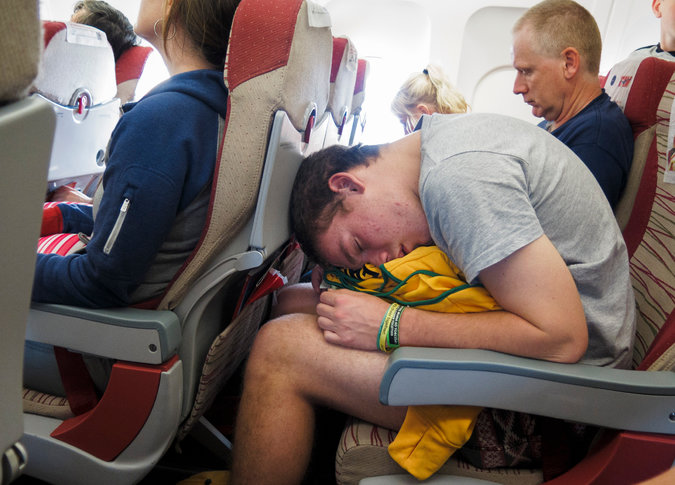“Me first!” has replaced “Safety first” as the air travel industry’s unofficial logo, according to consumer advocate and USA Today columnist Christopher Elliot, and it’s driving flyers bonkers.
It’s apparent now more than ever, with the recent three plane groundings in eight days over the most trivial of disputes – reclining seats.
Yes, it’s easy to smirk when hearing the news of the latest silly airline tryst. But, how would you feel if you were one of the hundreds of well-mannered, time-strapped passengers who had to endure an extra four-hour delay all because of a fight that’s pretty much nonsense?
The most disturbing part may be that in-flight rage is actually pretty rare. Last year, airlines carried 826 million passengers, and yet there were only 167 reports of unruly passengers, New York Times travel writer Joe Sharkey wrote.
Passengers struggle to find the slightest bit of comfort in the hellish ordeal that is the modern-day flight, and when they don’t get it, calamity ensues.
Whether it’s due to unanticipated hassles from the travel industry or unrealistic expectations from the customers, selfish behavior flares up during periods of high anxiety, like summertime and the holidays – putting people into “survival” mode, according to experts.
“In this state, people are highly reactive and self-focused,” Erin Olivo, assistant professor of medical psychology at Columbia University told Elliot. “They are hyper-vigilant about potential threats to their comfort or safety, and they don’t care about anyone else.”
Being in a foreign place, away from friends and family, can trigger “me first” behavior in some people, like pushing to the front of a line or hogging arm rests on the plane, Michael Brein, a psychologist who specializes in travel told Elliot.
Two products are even helping to facilitate “me first” behavior among travelers:
Create-A-Space is a $40 portable seat partition that sits on a coach-class armrest and is marketed to help you “feel first class” every time you fly. The Knee Defender, which Americans became more familiar with upon news that flights were being diverted because of it, costs $21 and stops the seat in front of you from reclining.
Is the airline the villain for driving its customers to create a culture of selfish behavior with tiny seats and lackluster customer service? Or are the passengers at fault for their inability to simply behave?
Obviously, since this seems to be a fairly new issue, the airlines are likely to blame, but their revenue management departments probably disagree.
A divide between the “haves” and the “have-nots” provide an even deeper explanation, says Sally Rudoy, a New York-based psychotherapist. It rewards a select few passengers and enriches the travel companies, but is bad for the masses.
“Creating tiers of service for which you can charge premiums – like first class, business class, economy plus, and gold car members – stirs up anxiety about where you (as a) customer rank in the world,” she told Elliot.
So, what’s next? Is it even possible for airlines to remove another inch or find even more “services” (like bathroom usage and carry-on privileges) to charge fees for?
At this point, we don’t even want to know.

 Save up to 60% on Business Class. Call 1-800-435-8776
Save up to 60% on Business Class. Call 1-800-435-8776


Leave A Comment